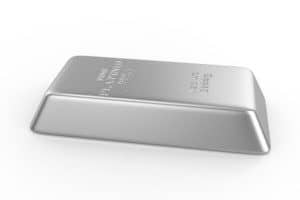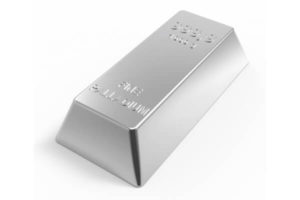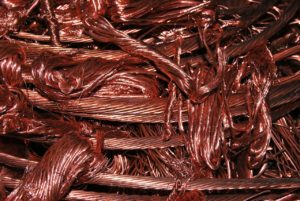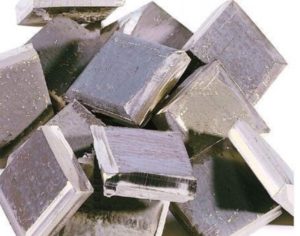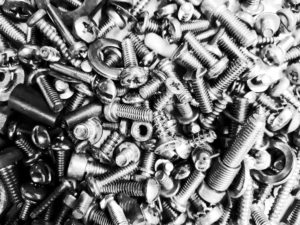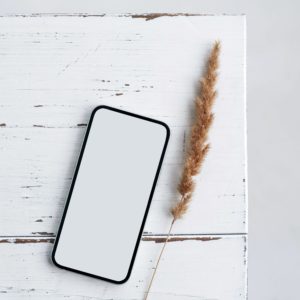Gold, silver, and platinum are among the metals in cell phones.
They are used in the circuitry, antennas, and other components of the phone. Other metals used in cell phones include copper, tin, aluminum, and zinc.
Some phones also contain small amounts of rare earth elements like neodymium and dysprosium. These elements are used in the magnets that make the phone’s speaker vibrate.
The use of precious metals in cell phones has been increasing in recent years. While gold and platinum are the most commonly used, silver is also becoming more popular.
This is because these metals have unique electrical properties that help to improve the phone’s signal strength and overall performance. Cell phone makers are looking for new ways to use these metals so that they can reduce costs and save money.
 Gold
Gold
Gold is used in cell phones to create connectors and antennas. It is also used in the phone’s circuitry and to create a gold-plated finish.
 Silver
Silver
Silver is used in cell phones to create connectors, antennas, and reflectors. It is also used in the phone’s circuitry. Silver can also be found in the phones touch screens, and buttons. Silver oxide is used to make batteries for cell phones last longer.
Platinum
Platinum is used as a connector between the motherboard and battery in smart phones. It is also used in the phone’s circuitry. Platinum is a rare metal that is used in very small quantities in some mobile phones for its electrical properties.
 Palladium
Palladium
Palladium is used as a connector in some mobile phones. It is also used in the phone’s circuitry.
OTHER METALS:
Many other metals are also used in mobile phones, such as:
Copper
Cell phones are ubiquitous in the world today. They are used by billions of people to communicate with each other.
One of the key components in a cell phone is copper. Copper is used in various parts of the phone, such as the antenna, battery, and connector.
The use of copper in cell phones has many benefits. Copper is a good conductor of electricity, which is why it is used in the antenna and battery.
It also has a low resistance, which allows for efficient power transmission. Additionally, copper is corrosion resistant, so it can be used in the connector without fear of rusting or corroding.
Nickel
Nickel is used in cell phones. It is also used in manufacturing batteries, alloys, and pigments. In some cases, it is used as a coating to prevent corrosion.
Most recently, nickel has been used in the development of green technologies. For example, nickel-cadmium batteries are being replaced with nickel-metal-hydride batteries, which are more environmentally friendly.
Nickel is also being used to create fuel cells that generate electricity without burning any type of fuel. These advances in nickel-based technologies are helping to make our world a little bit greener.
Nickle is a member of the platinum group metals. These are rare, precious metals that have many valuable properties.
Nickel alloys are used in many products because they have these valuable properties. Stainless steel is a popular alloy that contains nickel. It is strong and resistant.
Aluminum
Aluminum is a valuable resource that is used in many different applications. One such application is in cell phones.
Aluminum is used to create the cases and frames of cell phones. This metal is strong and durable, making it the perfect material for use in mobile devices.
Additionally, aluminum is light weight, which helps to keep the overall weight of the phone down. By using aluminum in cell phones, manufacturers are able to create devices that are both sturdy and portable.
Aluminum is also used in other electronic devices, such as laptops and tablets. Using aluminum in electronics helps to improve their overall performance and extend their lifespan.
Zinc
Zinc is a key component in making cell phone batteries. It helps to create an electrical current that powers the phone. Without zinc, the battery would not be able to hold a charge and the phone would not work. Zinc is also used in other electronic devices, such as laptops and tablets.
It is a common component in many electronic parts because it is a good conductor of electricity.
The popularity and widespread use of cell phones means that just about everyone is exposed to the electromagnetic fields they emit.
Iron
Iron is found in many cell phone antennas. It helps to create a strong signal, a metal that is found in the earth’s crust. It is very strong and is used to make things like tools, cars, and bridges.
Iron can also be combined with other metals to form alloys. An alloy is a material made by combining two or more different metals. Some common alloys are steel and brass. Steel is made by combining iron with carbon. Brass is made by combining copper and zinc.
Iron is a very important metal. It is used to make many different things. It is also very strong and can withstand a lot of wear and tear. Iron is essential for our everyday lives.
Cobalt
Cobalt is a naturally occurring mineral that is found in rocks and soil. It is also present in some foods and water. Cobalt is used in many industrial applications, including metal alloys, paints, plastics, and batteries. It is also found in some cell phones.
Specific Functions
Each metal has a specific function depending on its properties, such as making the phone durable or helping it to connect to cellular networks.
Copper, nickel, and aluminum are all used to make the phone’s body strong and durable.
Zinc is used in small quantities to create connectors and antennas, while gold and platinum are specifically used for their electrical properties.
The use of precious metals in mobile phones is not just for cosmetic reasons. These metals play an important role in helping to improve the phone’s performance, making it an important part of the device.
So next time you’re marvelling at your shiny new phone, remember that it’s not just the design that makes it so special – the metals inside are what really make it shine.
The Bottom Line
Gold is not only valuable for its color and shine, but also because it is a great conductor of electricity.
This means that gold is used in many electronic devices, including cell phones. You may be surprised to learn that your old cell phone likely contains more gold than you think.
In fact, there is about 1-2 mg of gold in every cell phone! With the ever-growing popularity of smartphones, we can expect the amount of gold used in electronics to continue to increase.
So the next time you’re ready to upgrade your phone, remember that you could be recycling some of that old hardware and putting money back into your pocket. Gold is found in nearly all cell phones.
It’s not just the gold, silver, and platinum that we’re extracting from our phones – it’s also the copper, zinc, and other metals. All of these materials are essential to creating the latest and greatest in technology.
We need to start recycling our cell phones to conserve these resources. With over two billion cell phone users worldwide, if every one of us recycled our old phone at least once a year, think of how much metal we could save.


 Gold
Gold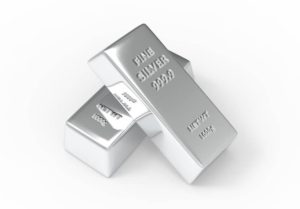 Silver
Silver